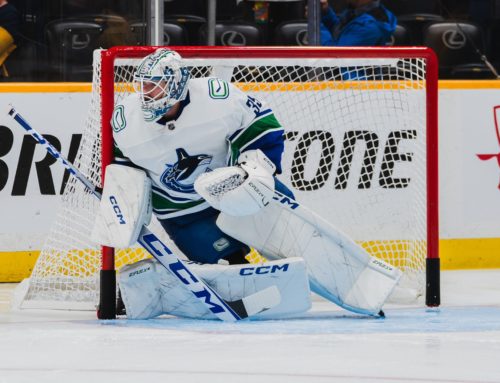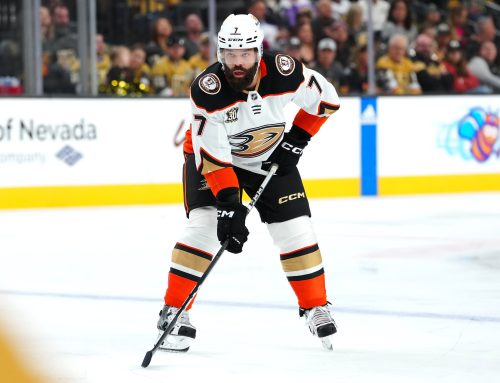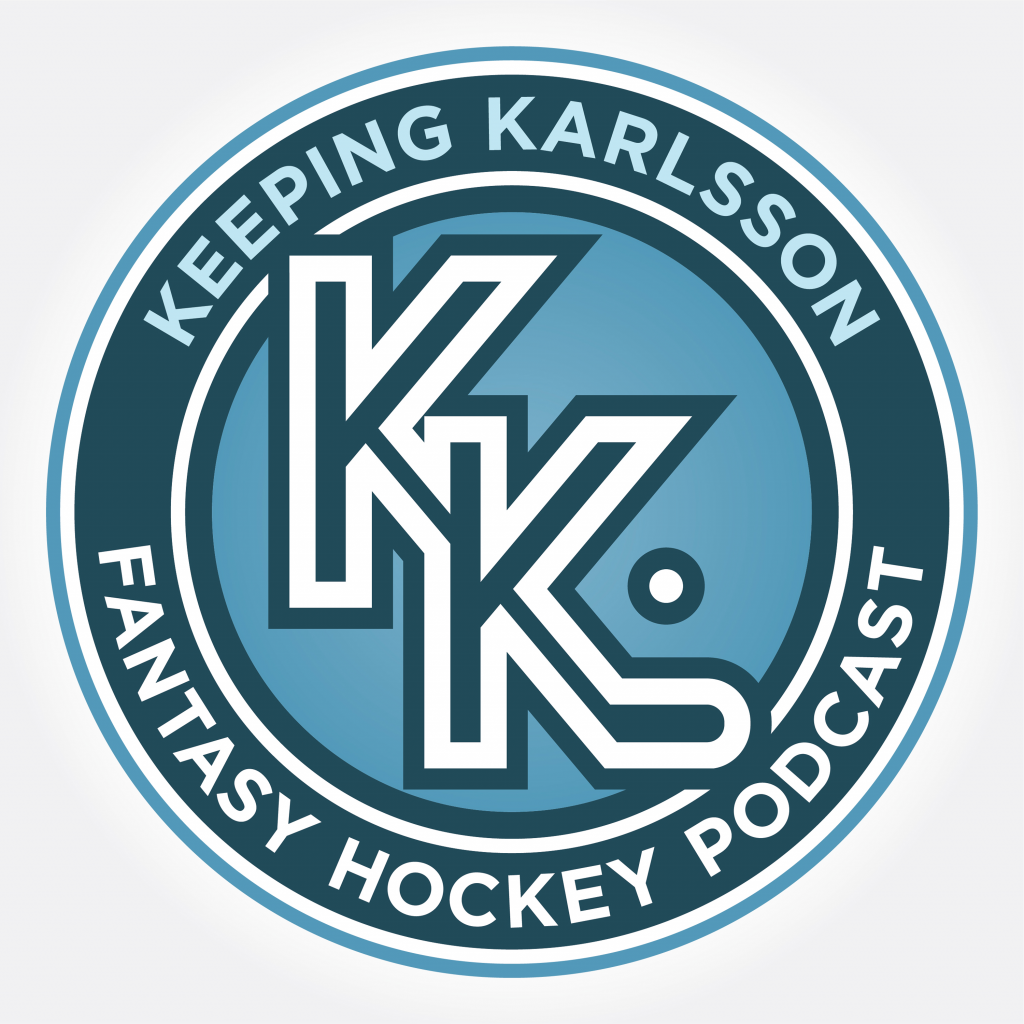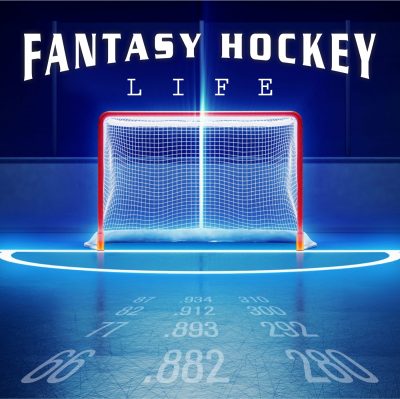We are one week away from the 2025 Dobber Hockey Fantasy Guide being released! Dobber himself is at work on projections, the editing and writing teams have assembled their articles, and now the guide is being put together. It has the aforementioned projections, a draft list, team-by-team breakdowns, regression and breakout candidates, and a whole lot more. The Guide is available for pre-order here, and it can also be acquired through the Keeper Pack, which includes the 2025 Prospect Report. Help support what we do year-round while getting a big leg up on your league mates by ordering the Fantasy Guide or Keeper Pack today!
*
Gabriel Vilardi got a six-year extension from Winnipeg over the weekend. Ian wrote a bit about it in Saturday's Ramblings.
I really do wonder what the Winnipeg top-6 is going to look like this season. Nikolaj Ehlers signing in Carolina leaves a huge hole on the second line and unless Cole Perfetti takes a massive step forward, there is no one on the roster who can replace Ehlers' offensive play. Well, not unless they break up the top line of Vilardi, Kyle Connor, and Mark Scheifele.
The way that Winnipeg runs their lines, they don't really have a 'second' and a 'third' line. They have a first line, two middle-6 lines, and a fourth line – last year, the gap between 4th and 9th in 5v5 TOI per game among Winnipeg forwards was 1:05. The two middle-6 lines can be delineated with one as a scoring line (the one with Perfetti) and the other as a checking line (the one with Adam Lowry). They are clearly hoping that Gustav Nyquist or Jonathan Toews can help replace Ehlers, but that's a lot to ask. So, it makes me wonder if we don't see the Lowry line get more ice time while that 'scoring' second line gets their TOI throttled down a bit.
That is unless they put Vilardi next to, say, Perfetti and Toews. Try to make it a genuine second scoring line, move someone like Nyquist or Nino Niederreiter to the top line, and cobble together the checking line around Lowry.
To me, it just seems hard to not move at least one of Connor or Vilardi down to the Perfetti line. With Ehlers gone, there just is not enough offensive talent to make a second scoring line without moving Connor or Vilardi down. They probably try to leave the top line together, but I have doubts it lasts very long.
*
Philadelphia's sixth overall pick from the 2025 Draft, Porter Martone, is heading for the NCAA in the upcoming season:
It is just nice to get clarity this early on where one of the Flyers' top prospects is heading for the upcoming campaign, so we don't really need to worry about him for fantasy hockey until late in the NHL season, if at all.
*
Last week, these Ramblings started an offseason project where I'm going step by step in creating projections. We started by figuring out a few of the stats we should be looking at in recent seasons to help project the future, then we reviewed the difference in projecting forwards and defencemen, and finished the week by looking at the changing NHL environment.
We are now at the point where we start narrowing our focus from the league as a whole to individual teams and players. While macro trends such as power play opportunities and shot volume will give us the general direction to travel, the environment of each specific team and profile of individual players will tell which roads to take. The first road we're going to travel down is ice time using data from Evolving Hockey.
There are aspects of projecting a future NHL season that can be complicated but we also don't need to make it more difficult than we need to. This applies to ice time because ice time at the player level really doesn't change a whole lot from season to season. Let's look at each of the last three pairs of seasons: 21-22/22-23, 22-23/23-24, and 23-24/24-25. We are going to take each player's ice time per game in the first season and see how it correlates to that player's ice time per game in the following season. Here is 21-22 and 22-23:

It is a strong positive relationship, which means the more TOI per game in 2021-22 the more TOI per game there was in 2022-23. When we look for the R-squared, or how much of the change in TOI per game is explained by that player's TOI per game from the previous season, we get a strong number:

For anyone needing a quick math refresher, the R-square is a number between 0 and 1, with 0 being absolutely no relationship between the two sets of data and 1 being a perfect relationship. An R-Square here of .656 is very high when considering how random hockey can be.
Of course, those seasons were 2-3 years ago, so we need to see if anything has changed more recently. Here is the same graph for TOI per game but in 2022-23 and how that related to TOI per game in 2023-24:

It looks pretty close to the one we just saw earlier, right? So it doesn't seem as if much has changed, but we still need to look at the R-square to know for sure:

The first pair of seasons saw an R-square of .656 and this pair of seasons has improved to .739. That is a pretty big jump, and if I had to guess what was going on it's that the 2021-22 season was still affected by the COVID pandemic, so team rosters saw a lot more change than they normally would have. The more recent seasons didn't have the same effect, but to make sure, let's look at the same graph but for the 2023-24 season and what happened in 2024-25:

There seems to be a similar pattern here, but again, we need to check the R-Square to make sure that our eyes aren't playing tricks on us:

The R-square has gone from .656 in 2021-22/2022-23 to .739 in the next pair of seasons to .736 in the most recent pair. It seems as if COVID protocols had a real effect on TOI per game across the league and when those protocols were no longer an issue, the correlation settled in a very tight range.
One final note here and it's on games played. When looking at which players saw a TOI/GP jump, there were a lot who only played maybe 1-5 games in either season, and those AHL call-ups can skew what might be an even stronger correlation. So, if we filter out for players who played at least 10 games in both the 2023-24 and 2024-25 seasons, the R-square jumps from .736 to .759:

If we account only for players that at least crossed the double-digit game threshold, the correlation improves and tells us there's an even stronger relationship in ice time per game from one season to the next.
As we did with the production stats, we have to differentiate between defencemen and forwards. That is because defencemen have a lot more room to jump in raw ice time just by the nature of the position. For example, from 2023-24 to 2024-25, there were six players who saw a jump of at least five minutes per game, and five of them were blue liners:

We see this when looking at all the numbers, too. If take just the forwards and isolate it to forwards who saw an improvement in ice time, the average ice-time jump was about 1.31 minutes:

Conversely, when taking just the defencemen and filtering for those who saw any kind of improvement in ice time per game, the average jump was about 1.82 minutes, or a half-minute more than the forwards:

In fact, if we take just the top 25% in ice-time risers among forwards, the average improvement is about 1.85 minutes, which is pretty close to the average ice-time jump among all defencemen. They are different positions and need to be treated as such from ice time all the way down to the rest of our fantasy categories.
Earlier it was mentioned that we don't need to make projecting the next season more difficult than we need to, and ice time fits that bill. On the whole, a player's ice time won't really change much from one season to the next and we could do a whole lot worse than just copy/paste a player's ice time per game from 2024-25 and assume that's what it will be in 2025-26.
It is also hard to figure out which players might see a huge ice-time jump, too: Tony DeAngelo saw the biggest ice-time rise and he didn't even start the season in the NHL; Philip Broberg saw the second-biggest jump and while a jump from his minimal usage in Edmonton was likely coming, climbing nearly nine minutes per game is a lot; Dante Fabbro had the fifth-largest jump but that didn't become a reality until he was traded to Columbus in November. (Note: As mentioned in the comments, this was a waiver claim and not a trade.) There are young players where it's easy to see them having a bigger role – Cutter Gauthier, Logan Cooley, Matvei Michkov – but some are going to be missed, and some by a lot. That is just the way this goes.
2 Comments
Leave A Comment
You must be logged in to post a comment.





 FLA
FLA CHI
CHI NYR
NYR PIT
PIT L.A
L.A COL
COL CAR
CAR MIN
MIN VGK
VGK N.J
N.J CBJ
CBJ BOS
BOS
 BUF
BUF

Can’t wait! Also, don’t forget the Fantasy Hockey Geek! And I did pay for the Geek, so why does it say my subscription expires on August 10, 2025? Please fix it. Thanks!
Fabbro was actually a waiver claim. Nashville cutting loose Fabbro and trading away Carrier were two questionable decisions…